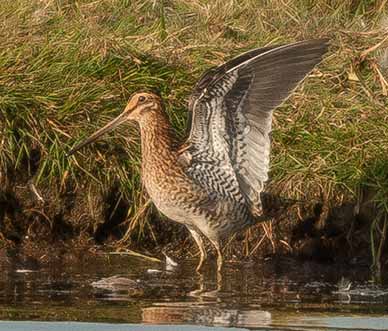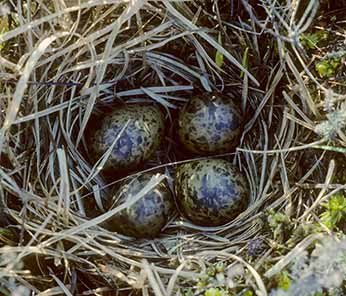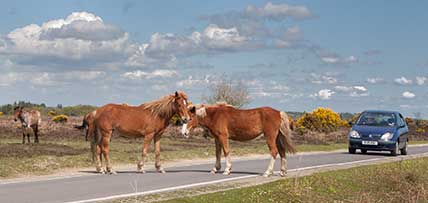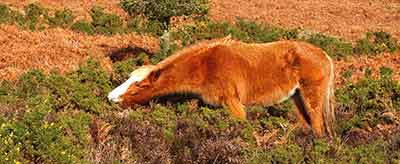Snipe (Gallinago gallinago)
When: All year round
How many: Relatively small numbers

Visit a New Forest valley mire at dawn in early spring and there is a good chance that you will be thrilled by the sight and sound of a drumming snipe.
One of the most evocative sounds of these New Forest wetlands, this is not a woodpecker-like drumming made by determined hammering against a hardened object, nor is it even a vocalisation. Rather, drumming by snipe is heard as the birds fling themselves earthwards from up on high, tail fanned and outer feathers held clear to reverberate in the passing air-stream.
Indeed, so high do snipe fly during this display that it is often difficult to immediately pick out the tiny speck responsible for the noise.
And the sound? Well, it’s more of a throbbing hum than a drum, and is often written as w-w-w-w-w-w-w-w-w or vuvuvuvuvuvu. Phonetics, though, rarely adequately describe bird sound, and in this case it is best to consider the sound as similar to that made by blowing through a comb covered with tissue paper.
Snipe are medium sized birds, a little bigger that blackbirds. They have relatively long legs, and incredibly long bills designed for probing wet ground in search of invertebrate food items. Their under-parts are white, but the remainder of the plumage is a rich mixture of browns, broken with pale buff and darker streaks in patterns that are quite dazzling when lit by low sunlight. The birds are, though, often difficult to see when stationed amongst reeds, rushes or other wetland vegetation.
They are year-round residents in the New Forest, but for much of the time are secretive and inconspicuous until those breeding season drumming displays.
Listen, too, for their ‘chipping’ call, sustained sometimes over lengthy periods whilst the bird is concealed amongst dense vegetation. Most often used in the breeding season, the sound is a rhythmic, repeated CHIP-per – CHIP-per - CHIP-per. Volume and emphasis is always on the somewhat sharp, almost truncated ‘chip’, whilst the ‘er’ tails away to meet the next ‘chip’.
Nests are no more than shallow scrapes lined with fine grasses, and are usually well-concealed amongst short vegetation. On average, four eggs are laid, incubation lasts 19 days, and the fledging period is a further 19 days.

Outside the breeding season, snipe often occur in small, loose groups, or ‘wisps’, and when flushed, call harshly as they zigzag away on rapidly beating wings, at first gaining height and then eventually tumbling to ground, often a good distance from the source of disturbance.
Sadly, numbers of breeding snipe in the New Forest have fallen lately. The most recent survey, in 2004 by the RSPB, yielded an estimated 111 pairs compared to 156 pairs in 1994, a decline of 29%. The potential causes: changes in habitat quality and increasing recreational disturbance by, for example, walkers, dogs and horse riders. Elsewhere in much of Hampshire and the south of England, breeding snipe have shown even more significant recent declines. The New Forest population, then, is of particular importance to the species.
John Wise made interesting comments about the species in the mid-19th century New Forest, saying: ‘The greatest numbers occur in December, though many remain to breed not only in the ‘bottoms’ of the New Forest, but also in the meadows of the Avon.
References:
The Shell Guide to the Birds of Britain and Ireland: James Ferguson-Lees, Ian Willis and J.T.R. Sharrock
Hampshire Bird Reports: Hampshire Ornithological Society
The Birds of the Western Palearctic, Concise Edition: D.W. Snow and C.M. Perrins
The New Forest: Its History and Scenery: John R. Wise.
New Forest Breeding Waders Survey 2004: A Survey of the Breeding Waders in the New Forest Valley Mires: R.D. Goater, C. Temple and A. Thomas
More links
Other related links
Search this site

Sadly, 58 animals were killed - 35 ponies, 13 cows, 8 donkeys and 2 sheep, whilst a further 32 were injured - 3 pigs, 9 donkeys, 11 cows and 9 ponies.
(Forty-three accidents occurred in daylight, 15 at twilight and 101 in the dark. Twenty-seven accidents were not reported by the driver involved).
Here's just one horrific example - Three donkeys killed in collision with van at notorious New Forest blackspot (Advertiser and Times)

